The concept of Organic farming is gaining gradual impetus in Kerala. During the past 12-15 years, many farmers in Kerala, other than those who continued traditional methods, have converted to Organic farming. However, those who converted from intensive agriculture to Organic farming had to face many immediate problems like a steep fall in yield. It is also difficult to maintain the organic purity in the soil and atmosphere due to the prevalence of modern agriculture in most cultivable areas.
Kerala’s rich endowments of various crops, especially spices, plantation crops, medicinal plants, etc., is an ideal destination for promoting organic farming due to the changing preferences worldwide towards organic and eco-friendly products. Currently, there are several ongoing initiatives in Kerala, and one such is to make Kerala fully organic, has begun with the formulation of a draft policy in 2003.
Now there are several certified organic farmers in the state, those cultivating cash crops such as spices, tea, and coffee, mainly targeting the export market, and non-certified organic farmers who focus on food crops and biodiversity. There are many initiatives from the government and various organizations to promote Organic farming in Kerala.
For example, a Statewide intensive action program on “Jaiva Keralam” was started by the government. Besides, the government came forward with a new policy on Organic farming in 2007, which the State Biodiversity Board had formulated. The policy documents entitled Kerala state organic farming policy, strategy, and action plan have a vision statement to make organic farming sustainable and eco-friendly.
Kerala organic farming
Major crops in Kerala
Kerala is bordered by the Arabian Sea, with an extensive network of backwaters, rivers, and streams. About 34 lakes, small streams, countless backwaters and waterbodies, and 49 rain-fed rivers are flowing throughout the state. In addition, Kerala receives an annual rainfall of 118 inches. All these factors make Kerala abundant in the water supply. This help to facilitate agriculture, so the state’s economy is largely dominated by agriculture.
Paddy
Kerala grows rice or paddy as its staple crop. Rice is grown in Kerala’s paddy fields in about 600 varieties. The Kuttanad region of the Alappuzha district of Kerala is known as the ‘rice bowl of the state.’ Palakkad, Alappuzha, Thrissur & Kottayam accounts for 80% of the total rice production in the state, and Kerala stands in 11th position in the country-wide rice production.
Rubber
In Kerala, rubber is one of the most important cash crops. India’s total natural rubber production comes from Kerala’s rubber plantations. Although rubber is not native to Kerala, Dutch planters were the first to introduce rubber for cultivation in Kerala. Kottayam district, especially the Meenachil and Kanjirappilly taluks, is the major producer of Rubber in Kerala. Ranni of Pathanamthitta district is another leading rubber producer in Kerala.
Coconut
Coconut is another important crop in Kerala. India is the third-largest country in coconut export around the world, and Kerala provides nearly 70% of the national output of coconuts. Coconut tree plays a pivotal role in the revenue generation of Kerala. Every part of the tree generates income, from the coir for mattresses to coconut shells for artifacts.
Besides rice and tapioca, Kerala also produces spices that form the state’s cash crop. 96% of India’s national output of pepper is produced in Kerala. The main spices grown here are cardamom, clove, cinnamon, nutmeg, vanilla, and turmeric. Cardamom is exported in large quantities, bringing great profit to the country.
Kerala produces other cash crops such as coconut, ginger, tea, coffee, arecanut, cashew, etc. Kerala’s main source of income comes from the coir industry, coconut shell artifacts, etc. Kerala’s economic gains are mostly derived from coconuts. Kerala produces approximately 70% of India’s coconut production. Kerala also grows cashew as a cash crop.
| Name of the Crop | Major Growing Districts |
| Paddy | Palakkad, Alappuzha, Thrissur & Kottayam |
| Coconut | Malappuram, Kozhikode and Kasargod |
| Cashew nut | Kasargod, Kannur, Ernakulam, Palakkad,Kottayam, Kollam |
| Tea | Idukki, Wayanad, Kollam, Thiruvananthapuram, Palakkad, Mankulam, Pallivasal, Meppadi, Mananthavady and Nelliyampathy |
| Coffee | Wayanad, Palakkad, Idukki |
| Rubber | Idukki, Pathanamthitta, Kottayam, Ernakulam Kollam, Ernakulam, Kozhikode and Pathanamthitta. |
| Cocoa | Idukki, Wayanad and Kannur |
Organic vegetable farming in Kerala
Organic farming systems rely on soil organic matter management to enhance the soil’s chemical, biological, and physical properties. One of the basic principles of soil fertility management in organic systems is that plant nutrition depends on ‘biologically-derived nutrients’ instead of readily soluble nutrients; less available forms of nutrients, such as those in bulky organic materials, are used.
In case you missed it: Growing Tomatoes Organically in Andhra Pradesh: Requirements, Planting to Harvesting Guide for Beginners
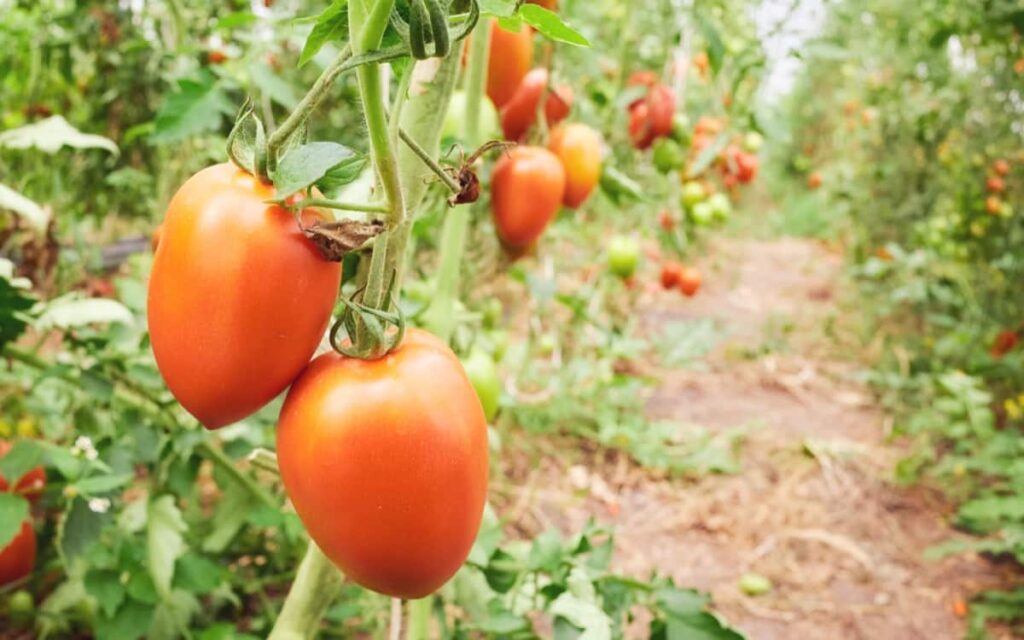
Improved soil biological activity is also known to play a key role in suppressing weeds, pests, and diseases. Animal dung, crop residues, green manure, bio-fertilizers, and bio-solids from agro-industries and food processing wastes are potential sources of nutrients for organic farming. Its primary objective is to improve the health of soils, plants, animals, and people communities through organic vegetable production.
With the increasing awareness about the safety and quality of foods, long-term sustainability of the system, and accumulating evidence of being equally productive, organic farming has emerged as an attractive source of income and ensures a profitable livelihood option. Kerala, with its varied climate and variety of soils, has enormous potential for the organic production of vegetables and for generating revenue through export.
| Vegetable | Areas growing in Kerala | Organic yield per acre | Crop duration |
| Drumsticks | Thrissur, Karunagappally, Malappuram, and Kanjirappally | 5-9 tons | 8-9 months |
| Okra | Alathur, Chittur, Palakkad, Pattambi, Neyyattinkara, Kattakada, Nedumangad | 5-6 tons | 90-100 days |
| Radish | Mananthavady, Sultan Bathery, Karunagappally | 15-16 tons | 60-65 days |
| Tomato | Kuttanad, Mavelikkara, Devikuma, Peermade, Idukki | 40-45 tons | 140-145 days |
| Cucumber | Pattambi, Neyyattinkara, Kattakada, Nedumangad, Alathur, Chittur, Palakkad | 6-6.5 tons | 45-50 days |
| Onion | Karunagappally, Mananthavady, Sultan Bathery, | 12-14 tons | 80-150 days |
| Cabbage | Kuttanad, Mavelikkara, Devikuma, Peermade, Idukki | 10-14 tons | 90-120 days |
| Cauliflower | Alathur, Chittur, Kuttanad, Mavelikkara, Devikuma, Peermade, Idukki | 35-50 tons | 60-150 days |
| Brinjal | Neyyattinkara, Kattakada, Nedumangad | 16-18 tons | 140-150 days |
| Potato | Karunagappally, Kuttanad, Mavelikkara, Devikuma, Peermade, Idukki | 10-12 tons | 75-120 days |
| Gaurds | Kuttanad, Mavelikkara, Devikuma, Peermade, | 10-12 tons | 55-75 days |
| Bhendi | Kuttanad, Mavelikkara, Devikuma, Peermade, Idukki | 5-7 tons | 45-60 days |
Organic herbs farming in Kerala
Kerala’s peculiar phytogeography makes it a rich repository of plant diversity. Western Ghats forests, backwater areas, marshes, swamps, and coastal regions harbor a wide variety of plant genetic resources, among which medicinal plants are important. In Kerala, medicinal plants are an important component of plant resources. Over 1000 species of Kerala’s estimated 5100 flowering plants possess medicinal properties, according to recent research. Around 450 of these species are used commercially in Ayush industries.
In case you missed it: Terrace Gardening ideas for Home in India: For Vegetables, Fruits, Flowers, and Herbs
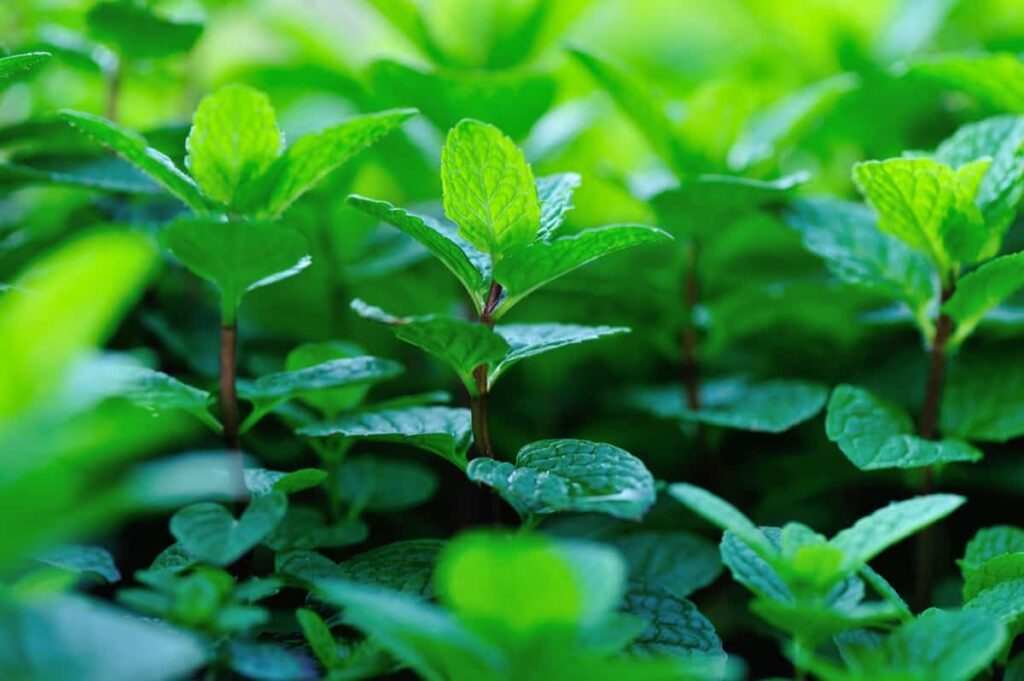
Traditional herbal medicines are abundant in Kerala thanks to a well-recorded and well-practiced knowledge base. Global demand for herbal ingredients creates opportunities for local cultivation of medicinal plants and aromatic crops and regulated and sustainable harvesting of wild plants. It could boost rural employment and commerce and improve people’s health in developing countries. A wide variety of rare, valuable medicinal plants can be found along the eastern border of Kerala in the foothills of the Western Ghats.
Organic fruit farming in Kerala
SHM-Kerala is the government’s nodal agency which receives funds from the Mission for Integrated Development of Horticulture (MIDH) scheme. It supports individuals and Institutions in expanding the area under horticulture crops and providing assistance for infrastructure development for value addition, processing, storage, and marketing.
MIDH also helps in the production of quality planting material, protected cultivation to boost the yield, adoption of Good Agricultural Practices (GAP) that would pave the way for ‘safe to eat’ produce, integrated nutrient and pest management, post-harvest management, setting up of rural markets and retail outlets, horticultural mechanization, training of farmers, etc. Therefore, SHM focuses on the holistic development of the horticulture sector in the state.
In case you missed it: How to Start Cocoa Farming from Scratch: Cultivation Practices and Production Management
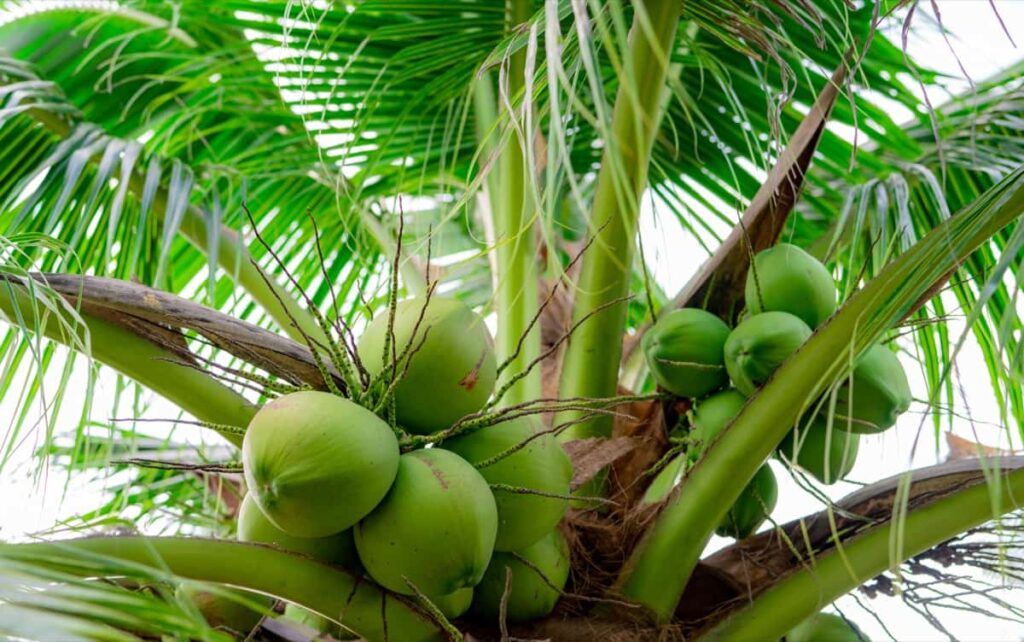
State Horticulture Mission – Kerala has been providing end-to-end holistic development of the horticulture sector, covering fruits, hybrid vegetables, medicinal plants, spices, flowers, aromatic plants, plantation crops, beekeeping, and mushrooms in Kerala. SHM has been supporting farmers to expand the area under cultivation of Mango, Banana, Pineapple, Pepper, Ginger, Turmeric, Nutmeg, Cashew, Cocoa, and minor fruits, including strawberry and flower crops, both cut and loose flowers.
| Fruit crop | Area (Acre) | Areas growing in Kerala |
| Jack fruit | 2,31,158 | Kollam, Thrissur, Ernakulam, Kottayam, Kasargod, and Pathanamthitta districts |
| Mango | 1,88,260 | Muthalamada, Palakkad, Wayanad |
| Papaya | 78,600 | Trichur, Wayanad, Kasargod, and Pathanamthitta districts |
| Banana | 69,700 | Thiruvananthapuram, Kuttanad, Mavelikkara, Devikuma, Peermade, Idukki |
| Guava | 22,250 | Kottayam, Kasargod, Kollam, Thrissur, Ernakulam, and Pathanamthitta districts |
Organic millets cultivation in Kerala
Millet production is in expansion mode in Kerala. As per the 2021-22, 4th advance estimates, Kerala ranks 20th in millet production in India. Millets of 364.57 MT have been exported from Kerala in the financial year 2021- 22 & rank 10th among states of India in the export of Millets to the world. Qatar, USA, UAE, Saudi Arabia, Oman, Kuwait, etc., are the major destinations of millet from Kerala.
Millet production in Kerala is concentrated majorly in 2 districts, i.e., Palakkad & Idukki. Among the cultivation areas, Attapady in Palakkad leads millet cultivation in Kerala with a significant share. Paramount cultivation happens in Agali, Sholayur, and Pudur panchayats of Attapady. 192 tribal hamlets of Attapady taluk have been declared millet clusters in Kerala by the state government.
Millets are cultivated on 1200 hectares over the two cropping seasons in Attapady. Other districts of Kerala, inspired by Attappady’s success with millet farming, have started the cultivation of millets. Sorghum, Ragi & Little millet are majorly cultivated in Kerala, and other millets are cultivated in negligible quantity.
Organic livestock farming in Kerala
The Animal Husbandry sector plays a pivotal role in the socio-economic development of Kerala and has immense potential, substantially contributing to the regional economy. This sector is an essential component of sustainable production systems and directly or indirectly influences the lives of every human being.
This sector contributes to approximately 4% of the state’s gross domestic product and has ample scope for development, impacting rural and urban lives. The sector is primarily responsible for the well-being of animals of the state. However, it is vested with enormous, multifaceted tasks of employment generation, poverty alleviation, ensuring food security, women empowerment, and wealth creation, besides being a hobby for sustenance.
In case you missed it: How to Make Cow Dung Manure Compost: A Step-by-Step Guide to Use in Your Farm/Garden
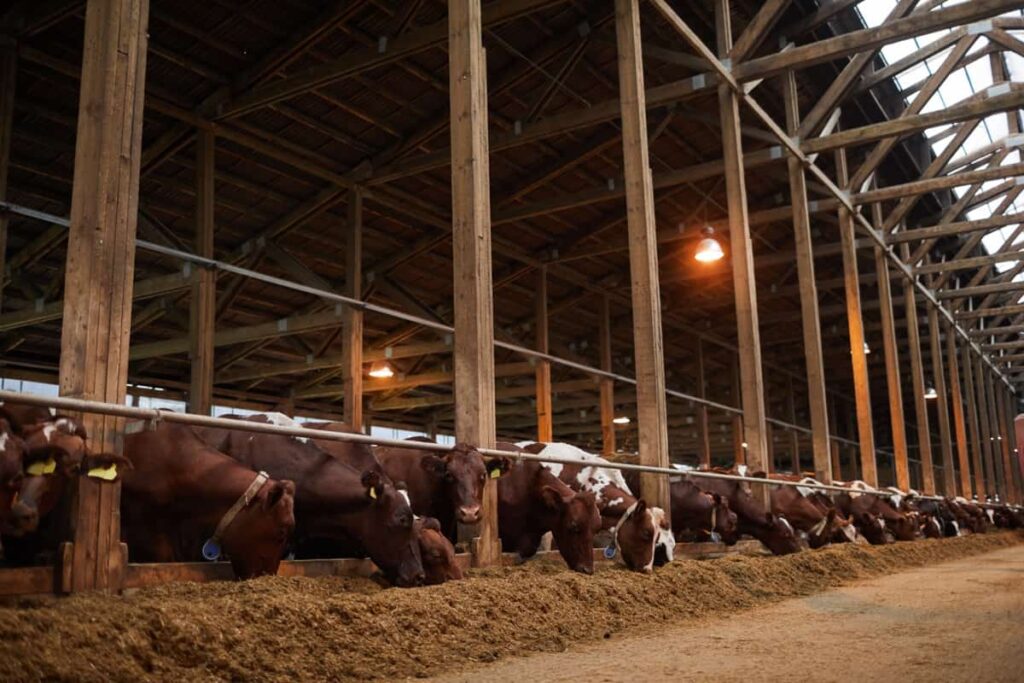
Kerala is a land with natural amenities for dairy development, and there is ample scope for rearing cattle, buffaloes, and goats. The dairy sector has significantly contributed to Kerala’s GDP over the past years. Implementing cattle induction programs like pasugramam and MSDP (Milk shed development program) has increased milk production in the last few years. But our demand for milk is much higher than domestic production.
The project MSDP (Milk shed development program) aims to bring more farmers/entrepreneurs to maintain the productivity of crossbred cows and create awareness among the farmers in adopting scientific management in cattle farming. To achieve the above goal, the scheme intends to assist with the purchase of single milk animals, starting mini dairy units with two milk animals, five milk animals, and ten milk animals.
To ensure a better future, the MSDP also proposes to assist the purchase of good quality heifer in preserving as a buffer stock for the future. It also intends to assist in infrastructure development for farmers by way of offering financial assistance to the construction of modern Cattle Shed, encourage mechanization in the field of dairying by assisting with the purchase of milking machines, and also to give need-based assistance to the progressive dairy of the state for modernization and mechanization of their farm activities.
Livestock population in Kerala (District wise)
| District Name | Cattle | Buffalo | Goat | Pig | Total Poultry |
| Kasaragod | 73968 | 1506 | 37427 | 4666 | 615472 |
| Kannur | 91687 | 2446 | 65166 | 12312 | 1325481 |
| Wayanad | 79753 | 4353 | 45365 | 9147 | 889246 |
| Kozhikode | 94248 | 3915 | 55215 | 11159 | 1760401 |
| Malappuram | 87035 | 15077 | 169892 | 2925 | 6137460 |
| Palakkad | 166952 | 9743 | 144095 | 9258 | 2028591 |
| Thrissur | 111932 | 20520 | 129579 | 13041 | 3399382 |
| Ernakulam | 108061 | 10029 | 126599 | 9142 | 4033870 |
| Idukki | 97395 | 5067 | 102432 | 14670 | 746356 |
| Kottayam | 81074 | 6163 | 94968 | 9200 | 2212169 |
| Alappuzha | 79370 | 5726 | 55109 | 424 | 1779061 |
| Pathanamthitta | 61157 | 3260 | 52106 | 894 | 798872 |
| Kollam | 110542 | 8658 | 124326 | 1582 | 1522105 |
| Thiruvananthapuram | 98822 | 5041 | 156882 | 5443 | 2523439 |
| Total | 1341996 | 101504 | 1359161 | 103863 | 29771905 |
Organic aquaculture farming in Kerala
The unique feature of Kerala is the presence of many estuaries and backwaters covering almost the entire coast. It is well endowed with abundant inland water resources with a variety of aquatic life. The rivers, brooks, streams, etc., originating from the Western Ghats, are well known for their biodiversity. Decreasing production trends from capture fisheries, anthropogenic factors, climate change, etc., make aquaculture a prominent source of food supply.
Growth of aquaculture may ease pressure on the threatened wild stock and increase the food supply to cope with the increasing demands. Fish forms a vital diet item and offers employment to coastal inhabitants. The development of fisheries and aquaculture ensures food and nutritional security. Fish is one of the cheapest and most easily digestible animal proteins. The Kerala government implements the Janakeeya Matsyakrishi project with the following components :
One Paddy One Shrimp Farming
The state has extensive pokkali and kaipad fields that remain idle due to the intrusion of saline water, making them unsuitable for agriculture. These fields are extensively seen in Alappuzha, Ernakulam, Kottayam, Thrissur, and Kannur districts. Shrimp culture can be practiced in these areas with slight modifications to the bundh.
In case you missed it: Common Shrimp/Prawn Diseases, Symptoms, Treatment: Check How this Guide Helps Shrimp Farmers
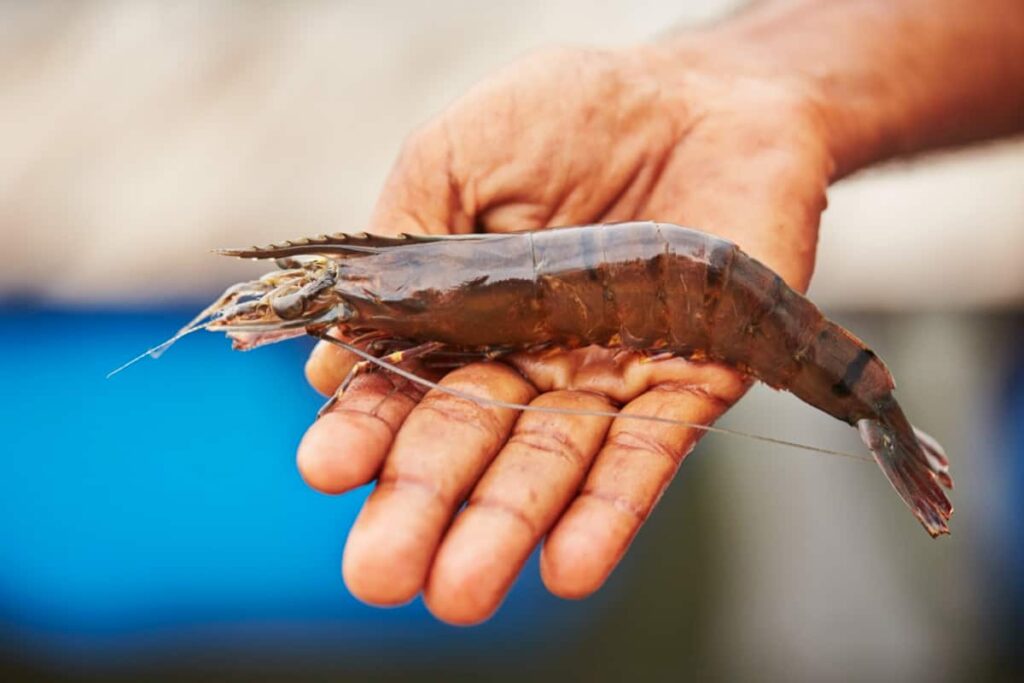
The method provides sustainable use of the resource by efficient recycling of nutrients for both the paddy and shrimp. Apart from this, it provides an additional income for the farmers. The minimum area for One paddy and one fish farming will be 100 cents.
One Paddy One Fish Farming
The state has rich wetlands resources, which remain fallow during major parts of the year. These are low-lying paddy fields where paddy is cultivated for four months, and for the rest of 8 months, it is kept fallow. Alternate cropping of fish and paddy can be done in these fields with minor modifications. This integrated farming system is considered sustainable and reduces pesticide and fertilizer application. It is planned to implement the ‘One paddy, One fish’ culture practice in a location-specific manner.
Cage Farming Of Fish In Fresh Waters
Fish culture in the cage is the practice of growing fish in a confined enclosure, facilitating easy feeding, harvesting, and other management procedures. One of the potential resources available for this farming in Kerala is the freshwater bodies such as quarries, open fields, and other stagnant freshwater bodies, which remain in idle condition and hold huge volumes of water, and have higher depths that are non-drainable.
In Kerala, freshwater cage culture has been introduced very recently and is gaining popularity among aqua farmers. There is also potential for farming Anabas, Clarius, and Heteropneustus in cages. There are 54 reservoirs in the state (2 major above 12,500 acres, 13 medium of 2500 to 12,500 acres, and 39 small of less than 2500 acres).
The total reservoir area is the highest in the Idukki district, followed by Palakkad, Thrissur, Kozhikode Kollam, Pathanamthitta, and Thiruvananthapuram. The maximum number of small reservoirs is in the Idukki district (14), followed by Palakkad (10), Thrissur (6), and Pathanamthitta (3). The freshwater lake area is maximum in the Idukki district, followed by Kollam, Thrissur, and Thiruvananthapuram.
How to get an Organic certificate in Kerala
- A farmer (or group of farmers/processors/traders) seeking an organic farming certificate must ensure that their farm meets the National Programme for Organic Production (NPOP) standards.
- Applicants must submit their applications under the National Programme for Organic Production’s (NPOP’s) requirements.
- INDOCERT certification can be obtained by contacting the INDOCERT office by the operator (person responsible for the unit being certified). Upon receiving a money order, DD, or cash payment of Rs.75/-, INDOCERT sends a detailed application package, including the application form and procedure for INDOCERT certification. The operator must complete and submit applications for certification to the INDOCERT office.
- After receiving the filled-in application form, INDOCERT sends an offer for inspection and certification along with the scale of fees. On accepting the offer, the operator needs to send 75 % of the offer fees as an advance in the form of DD in favor of M/s. INDOCERT is payable at Alwaye.
- INDOCERT, in consultation with the operator, schedules the inspection after receiving the advance payment. The operator must sign contracts for inspection and certification before the inspection.
In case you missed it: Karnataka Organic Farming: For Vegetables, Fruits, Millets Crops, Livestock, Aquaculture, and Certification
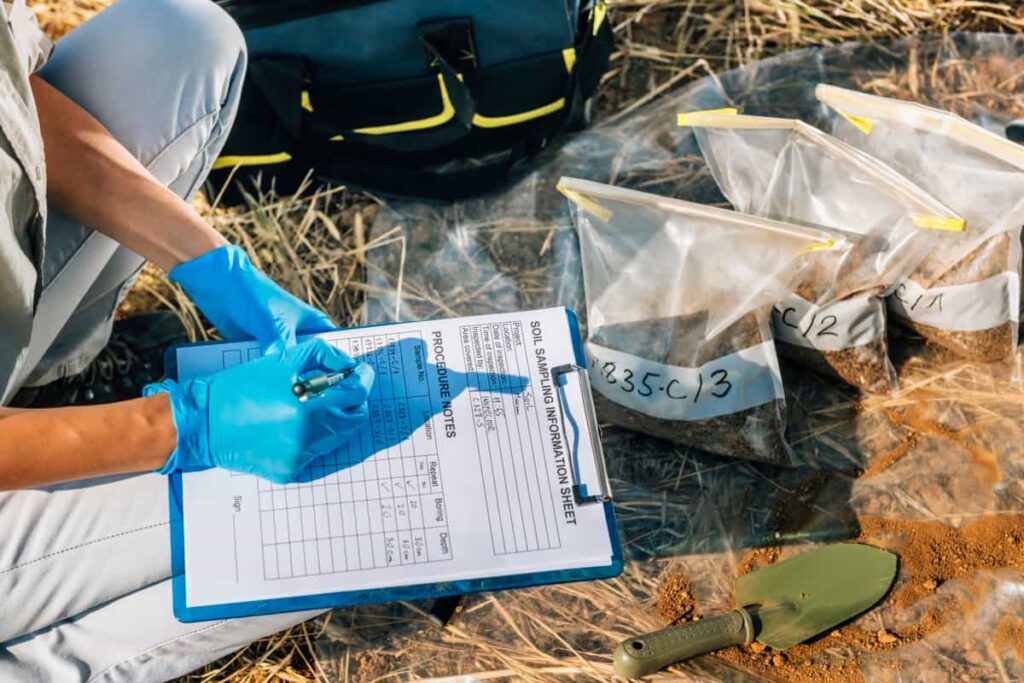
- A member of the INDOCERT team will follow the principles outlined for the inspector during the inspection. As stated in the inspection and certification contract, the operator must cooperate with the inspector.
- During the inspection visit, the inspector completes the inspection report. The operator acknowledges it with their signature, and a copy is given to them. During the inspection, the operator is also given copies of relevant standards and the scale of sanctions.
- To continue the certification process, the original inspection report will be forwarded to INDOCERT.
- After inspection, the operator receives an invoice for the inspection and certification costs. INDOCERT must receive the remaining amount of the final invoice from the operator.
- As soon as the full payment is received, the Assessor will review the inspection report, and the file will be submitted to the certification committee.
- A communication will be sent to the operator if additional documents are needed.
- The certification committee will make the certification decision based on the available documentation.
Conclusion
There is a rich potential for promoting organic farming in Kerala in the light that the intensity of inorganic agriculture here is not that severe compared to that in other States in the country. Many certified organic farmers are currently in the state, mainly targeting the export market. Kerala also has accredited organic certifying agencies catering to the needs of the farmers. If you plan to start organic agriculture or organic horticulture, or organic aquaculture, this blog post will help you to understand the various aspects of organic farming in Kerala.
| Alappuzha | Kozhikode |
| Ernakulam | Malappuram |
| Idukki | Palakkad |
| Kannur | Pathanamthitta |
| Kasaragod | Thiruvananthapuram |
| Kollam | Thrissur |
| Kottayam | Wayanad |
- Management Pests and Diseases in Your Cotton Field
- Sheep Farming Business Plan for Beginners
- Aquaponic Farming at Home: A Step-By-Step Guide
- Profitable Village Farming Business Ideas in 2024
- High-Yield Aquaculture: Fast-Growing Fish for Farming
- Effective Fish Pond Construction Techniques for Beginners
- Irrigation and Water Management in Pineapple Farming
- Blossom to Harvest: Mastering Flowering and Pollination in Papaya Farming
- Pig Fattening Essentials: From Selection to Sale for Beginners
- Raising Wagyu Cattle: A Complete Guide for Premium Beef Production
- Soil Types and Their Water Holding Capacity
- Optimizing Irrigation Schedules for Coconut Groves for Enhanced Yield
- Espresso Your Garden: Coffee Grounds for Healthier Acid-Loving Plants
- The Best Soil Mix for Snake Plants: How to Mix Your Own Snake Plant Soil
- Green Thumb Success: Expert Tips for Cultivating Greenhouse Beans All Year Round
- Bloom All Year Round: The Ultimate Guide to Indoor Hyacinth Care
- Eco-Friendly Gardening: How to Make Liquid Fertilizer from Kitchen Waste
- Ultimate Guide to Grow Anise in Pots: Explore Seed Propagation to Harvesting
- Guide to Raising Chester White Pigs: Discover Breed Facts to Growth Management
- Mastering the Elegance: The Ultimate Guide to Weeping Cherry Tree Care, Planting, and Maintenance
- Ultimate Guide to Planting Garlic in Grow Bags: Growing Strategies for Beginners
- How to Fix Spider Plant Leaf-Related Problems: Natural and Organic Remedies
- 10 Reasons Why Your Tulsi Plant is Shedding Leaves: Home Remedies and Solutions
- Optimizing Growth and Yield: The Advantages of Palm Bunch Ash Fertilizer
- Utilizing Neem Oil Extract as a Natural Pesticide for Hydrangea
- From Soil to Harvest: Various Ways in Which Farmers Can Use AI Tools
- Steps to Encourage and Induce Citrus Flowers: A Comprehensive Guide
- How to Fix Snake Plant Leaf-Related Issues: Natural and Organic Remedies
- Transform Your Garden into a Fragrant Oasis with Raat Ki Rani (Night Blooming Jasmine)
- Discover the Ideal Chicken Breeds for Philippine Farms
- How to Create a Poultry Egg Farm Business Plan for Profits
- Grow Lemon Cucumbers Like a Pro: Insider Techniques for Bountiful Yields
- Ultimate Guide to Caring for Your Pink Princess Philodendron: Tips for Thriving Variegation
- Areca Nut Profit Per Acre: Calculating Yield and Cost of Cultivation
- How Kaveri Chicken is Becoming a More Profitable Breed in Indian Backyards
- Transform Your Barn: 9 Steps to Convert a Horse Stall into a Chicken Coop
